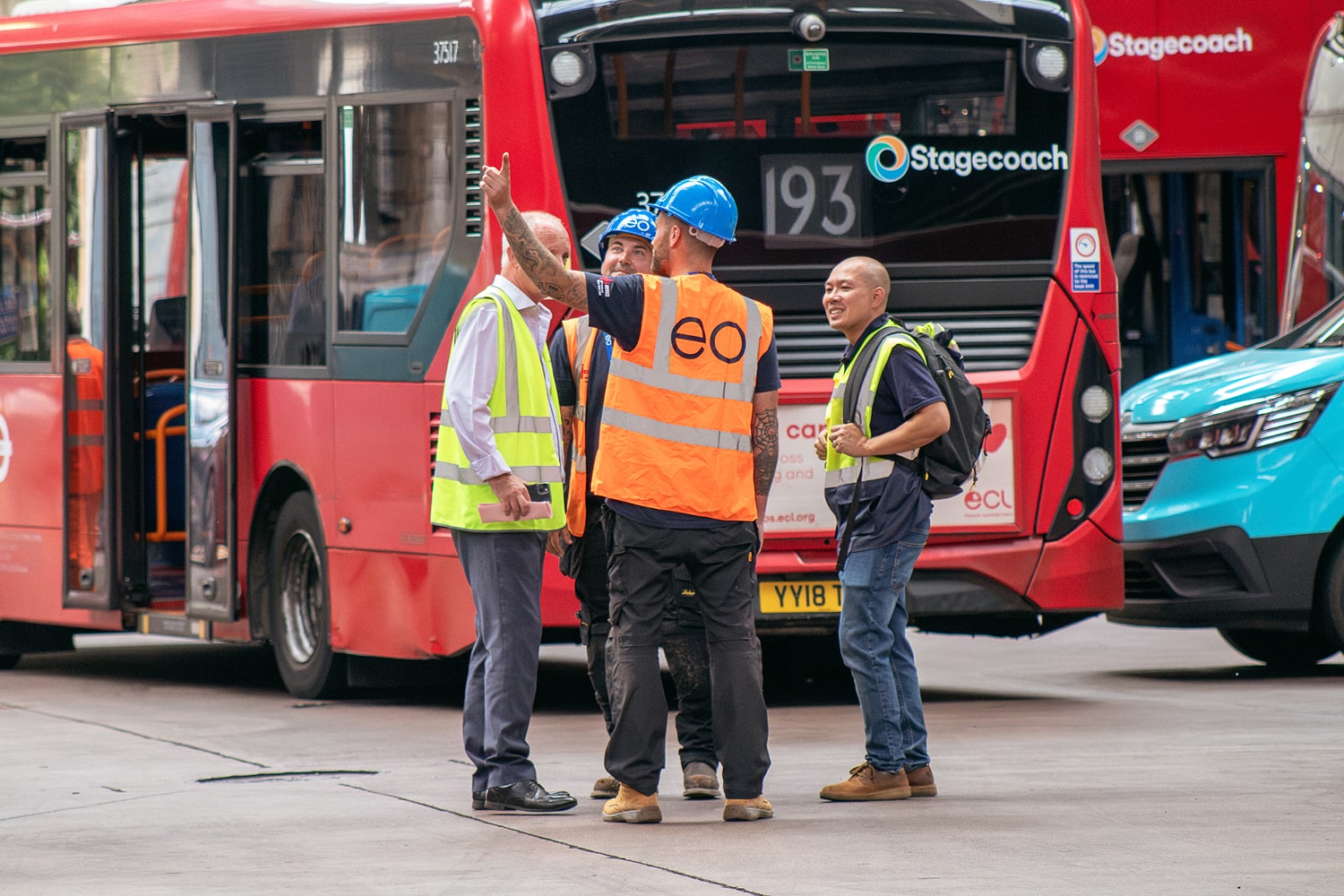Blog
How to Access Local EV Funding and Initiatives
The transition to electric fleets isn’t just about technology; it’s about timing, strategy, and smart investment. One of the most powerful tools available to fleet operators today is government support.
As countries race to meet net-zero goals, local and national authorities are offering a wide range of funding schemes, subsidies, and regulatory guidance to accelerate the adoption of electric vehicles (EVs) and charging infrastructure. For commercial fleet operators, tapping into these initiatives can ease financial pressures, reduce risk, and ensure long-term compliance.
In this blog, we explore the different types of local funding available, how they are shaping EV adoption globally, and why staying ahead of evolving regulations is essential for any organisation on the path to electrification.
Why Policy Matters in the EV Transition
Fleet electrification is a long-term investment, but one that becomes more achievable with the right policy framework. Across the globe, governments are introducing new regulations and incentives to remove common barriers, particularly around cost, infrastructure, and energy management.
A common misconception is that accessing funding is complex or limited to a select few. There are numerous schemes available, each designed to support operators at different stages of their journey. Whether it’s identifying the right grant, understanding the application process, or ensuring your infrastructure meets local compliance standards, the team at EO can guide you through it.
In addition to financial assistance, these initiatives enable operators to plan for the future with confidence. By aligning your projects with national strategies and regulatory expectations from the outset, you minimise the risk of future retrofits and ensure your investment delivers long-term value.

UK: Leading the Way in Regulatory Frameworks and Targeted Support
Successful Historical Grants
The UK government has long taken a proactive approach to transport decarbonisation, introducing targets such as the ban on new petrol and diesel HGV sales from 2040. Several early-stage grants have already played a pivotal role in support fleet operators:
Plug-in Truck Grant: Offers up to £25,000 towards the purchase of eligible electric HGVs over 12 tonnes, and £16,000 for trucks between 4.25 and 12 tonnes. This grant has supported thousands of low- and zero-emission HGV purchases, helping early adopters test and scale their EV infrastructure.
ZEBRA Scheme (Zero Emission Bus Regional Areas): Backed by £525 million in government funding, ZEBRA supports local transport authorities in deploying zero-emission buses and associated charging infrastructure. To date, the scheme has supported over 1,200 electric buses and depot upgrades, contributing to significant reductions in urban emissions and operational costs for local operators.
These early initiatives laid essential groundwork by accelerating the UK’s shift to zero-emission transport, building operational expertise, and improving early-stage energy and charging management.
Currently Live Grants
Several new or ongoing grants continue to support UK fleet electrification:
Depot Charging Scheme: Launched in July 2025, this grant covers up to 75% of chargepoint and civil works costs (capped at £1 million across all sites). It is open to public and private operators, local authorities, and non-profits across the UK. With £30 million in total funding, applications close on 28 November 2025, and installations are required to be completed by 31 March 2026.
Smart Charging Compliance Support: Although OZEV’s workplace charging support has been replaced by the Depot Charging Scheme, compliance with Smart Charge Point Regulations remains essential. These mandates ensure all new private EV chargers installed in England, Scotland, and Wales include smart features such as default off-peak charging and energy usage data tracking. Public Charge Point Regulations further standardise reliability and accessibility.
Together, these grants and regulations give operators both financial support and clear expectations for building scalable, compliant EV charging infrastructure.
United States: Major Federal Investment and State-Level Momentum
With a new administration under President Trump, federal EV infrastructure policy is evolving. While previous initiatives under the Biden administration set ambitious targets, such as a 500,000-charger national network by 2030 and $15 billion in funding, these policies are now under review, and priorities may shift.
However, key federal programs remain active:
Administered by the Federal Transit Administration (FTA), these programmes allocated roughly $1.7 billion this fiscal year to support low- and zero-emission bus purchases and infrastructure. The Low-No Program continues to fund up to 85% of vehicle costs and 90% of associated charging infrastructure, including EV charging systems, helping transit agencies deploy and manage battery-electric fleets.
These historic initiatives have significantly accelerated EV adoption nationwide, helping scale manufacturing, reduce technology costs, and encourage long-term planning across transit agencies.
At the state level, momentum remains strong. California, for example, still mandates 100% zero-emission buses by 2040 and continues to offer its own incentives.
Even as federal direction shifts, many funding mechanisms are already in place, and several states remain committed to electrification. Staying informed will be critical for fleet operators navigating these changes in policy.
Europe: A Unified Drive Toward Net Zero
Europe’s electrification is being driven by strong environmental commitments and practical policy frameworks, including the European Green Deal, which targets a 55% reduction in greenhouse gas emissions by 2030.
Key support incentives include:
Alternative Fuels Infrastructure Directive (AFID): Requires member states to develop a minimum level of public EV charge points, ensuring a consistent and standardised charging network across the EU.
National Subsidies: Countries like France, Germany, and Poland, offer substantial grants, tax reductions, and incentives for both vehicle purchases and infrastructure installation. For example, Germany’s subsidies offer up to 80% for fleet and charger deployment, while France supports buyers with up to €7,000 through its bonus-malus scheme.
Regulatory Clarity: EU-wide standards, such as the ‘Fit for 55’ package and ‘Euro 7 Emissions’ targets, help fleet operators manage cross-border electrification strategies.
Aligning with these policies helps commercial operators reduce risk, streamline procurement, and maximise the ROI of their electrification strategy.
The Future of EV Funding and Grant Direction
As the EV market matures, funding is becoming increasingly targeted. Governments are shifting from broad-based incentives to strategic grants designed to maximise local economic and environmental outcomes.
For example, the UK’s Electric Car Grant now considers where the vehicle is manufactured, favouring models produced in countries with lower-emission electricity grids, such as the UK, over higher-emission regions like China or Poland. This reflects a broader trend: eligibility criteria increasingly account for supply chain emissions and lifecycle sustainability.
Looking back, early grants were designed to stimulate adoption and breakdown barriers. Once momentum built, grants became more refined, shifting focus to areas that still face structural challenges. For example, the UK’s early grants supported nearly all types of charger installations, but in more recent schemes, they have been refined to more specific use cases such as cross-pavement charging, multi-dwelling units, and depot energy management.
This evolution highlights a natural policy evolution. As markets become more self-sufficient, grants transition from kick-starting adoption to optimising infrastructure and integration. Future grants are likely to focus on target areas such as grid flexibility, energy management, interoperability, depot optimisation, and smart charging integrations.
For fleet operators, this means opportunities will become more specialised and competitive. Aligning early with these emerging policy priorities improves funding eligibility and strengthens long-term strategic positioning.

How to Access Local Funding and Support
Knowing these schemes exist is only the first step. To maximise on available support, it is important to:
Map out the landscape: Identify relevant grants, regulations, and incentives in your region. Consider both national and local funding streams as many operate independently.
Build strong partnerships: Collaborating with industry partners and experienced suppliers like EO ensures you understand the complexities of grant applications and compliance standards.
Incorporate funding into your project plan : Funding cycles rarely align with operational timelines. Your business case should account for potential delays or changes.
Stay informed: Policies are constantly evolving. Subscribe to government updates, industry insights, and policy briefings to ensure your strategy reflects the latest guidance.
Conclusion
While the upfront cost of fleet electrification can be daunting, government funding is helping level the playing field. From the UK’s Plug-in Truck Grant to the US Low-No Program and the EU’s Green Deal directives, local initiatives are essential enablers of the transition to electric.
By staying informed, acting early, and aligning your projects with evolving policy, your organisation can secure financial support and build long-term regulatory certainty.
At EO, we work closely with fleet operators across the UK and Europe to navigate funding schemes, design compliant infrastructure, and deploy smart charging systems that scale. If you are looking to take the next step, our team can help you identify funding opportunities in your region and integrate them into a future-ready electrification strategy.

Speak to an Expert
Find out more about the range of options available to businesses looking to electrify.
Contact Us